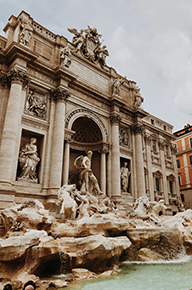From Estate Planning to Business Law, Asset Protection to Real Estate, and Tax Planning to Compliance—your future, safeguarded from every angle.
Who Owns the Property in a Revocable Trust?

Table of Contents
So, you’ve heard about revocable living trusts as a powerful estate planning tool. Your lawyer might have even suggested setting one up as part of your comprehensive estate plan.
But before you start transferring property into a trust, you need to understand how property ownership actually works in this unique legal arrangement.
What is a Revocable Trust?
First, let’s do a quick refresher on what a revocable living trust is and how it works in your estate plan. Essentially, it’s a legal arrangement where you, as the grantor, create a trust document that outlines how you want your assets managed during your lifetime and distributed after your death.
The beauty of a revocable trust is that you can change, modify, or even revoke it entirely at any point while you’re still alive. You can add or remove assets, change beneficiaries, and tweak the terms as your life circumstances evolve. It’s that flexible.
How Property Ownership Works in a Revocable Trust
Now, here’s where things get a little tricky. When you transfer property into your revocable trust, you’re actually diving that ownership into two parts:
- Legal title goes to the trustee
- Beneficial ownership stays with you as the grantor
Imagine your trust as a box. The legal title to your property (like the deed to your house or the registration to your car) gets put inside that box. So, on paper, the trust, through the trustee, legally owns those assets.
But here’s the crucial part – you still hold the strings to that box. As the grantor, you retain the right to use, manage, and benefit from the property because you also have the beneficial interest. It’s like enjoying the best of both worlds.
The Grantor Still Retains Control Over Assets in a Revocable Trust
If you’re starting to worry that putting your property in a trust means giving up control, still don’t worry. You’re still firmly in the driver’s seat. As the grantor of a revocable trust, your powers are pretty expansive. You can:
- Take assets in and out of the trust
- Buy, sell, or transfer trust property
- Change the terms of the trust agreement
- Appoint or remove trustees
- Revoke the entire trust and reclaim legal title
Essentially, the trust is simply a tool to manage things according to your wishes while you’re alive. Even though it legally owns the assets, the trustee must follow your instructions. And if those assets earn income? That’s credited to you at tax time because your beneficial interest makes you the real owner in the eyes of the IRS. This means that the grantor (you) continues to report income, gains, and losses from trust assets on your personal tax return.
What Happens to Your Revocable Trust After Death
Now, what happens to all this when you pass away? Here’s where the true benefits of trust planning come into focus. The moment you die, if drafted properly, your revocable trust automatically transforms into an irrevocable trust. It’s like your final wishes are set in stone.
At that point, the successor trustee you named in the trust document steps up to the plate. Their job is to manage the trust assets and distribute them to your beneficiaries exactly as you’ve laid out in your instructions. And because the property is already titled in the name of the trust, it can pass to your loved ones without the headaches and hassle of probate court.
The Importance of Funding Your Trust
Of course, none of these perks and protections kick in unless you actually transfer your property into the trust during your lifetime. Lawyers call this process “funding” the trust.
It involves changing the legal title from your individual name to the name of the trust for things like:
- Real estate
- Bank accounts
- Investment portfolios
- Business interests
- Personal property
Neglecting this step can leave your assets vulnerable and undermine the purpose of your trust. Your estate could end up going through probate for assets held outside the trust, which defeats the whole purpose.
Please note that certain assets (like retirement accounts and life insurance) should not be retitled in the trust’s name. Instead, these should have updated beneficiary designations in alignment with the trust.
That’s why it’s so key to work with a knowledgeable estate planning team like BFG Law to make sure your trust is properly funded with the right assets while maintaining tax efficiency and probate protection.
The Takeaway
We know it’s a lot to wrap your head around, but the key things to remember are:
- With a revocable trust, you legally transfer title to the trust but retain your rights as the beneficial owner during your lifetime
- As grantor, you still control and manage the trust property, and even have the power to revoke the whole arrangement
- At your death, the trust becomes irrevocable, and the successor trustee distributes the assets to your beneficiaries, avoiding probate
- Properly funding the trust during life is crucial to making the whole plan work
While it may feel strange to split ownership this way, it’s precisely this arrangement that allows your estate plan to work its magic. You get to keep control while alive but set up an efficient, private transfer of wealth to your loved ones after you’re gone.
Protect Your Legacy and Loved Ones
Our team at BFG Law knows estate planning and trusts like the back of our hands. We’ve helped countless clients just like you navigate these complex concepts and craft airtight plans. We take the time to really get to know your unique family dynamics, financial picture, and long-term wishes so that we can design a trust that checks all your boxes.
So, if you’re ready to take that first step into securing your legacy, give us a call. We’ll walk you through everything from trust creation to funding to administration. Our goal is to give you the peace of mind that comes with knowing you’ve protected what matters most – your assets and your loved ones.
Together, we can leverage the power of revocable trusts to shape your ideal future. Don’t wait—contact us to get started today.










